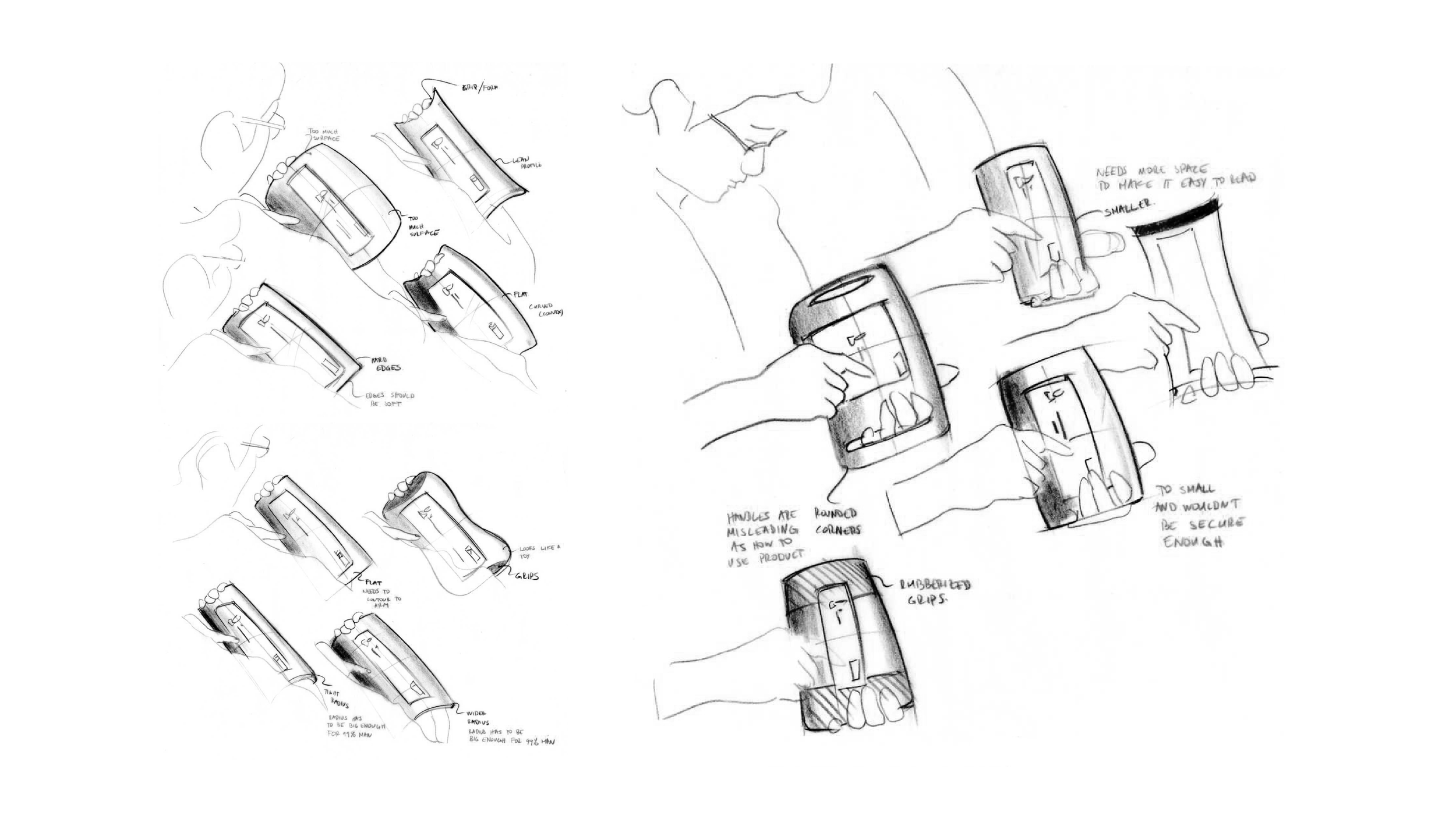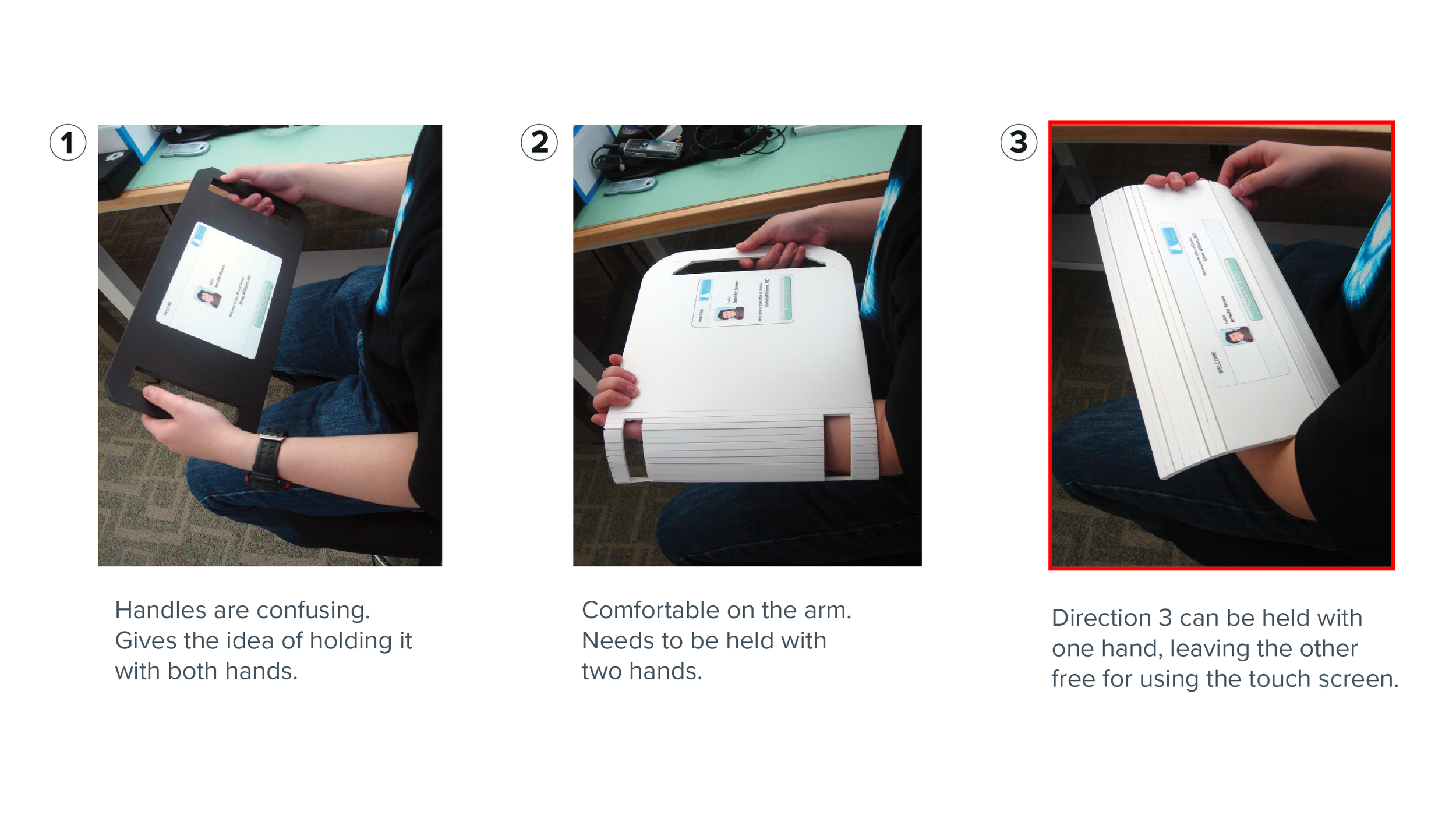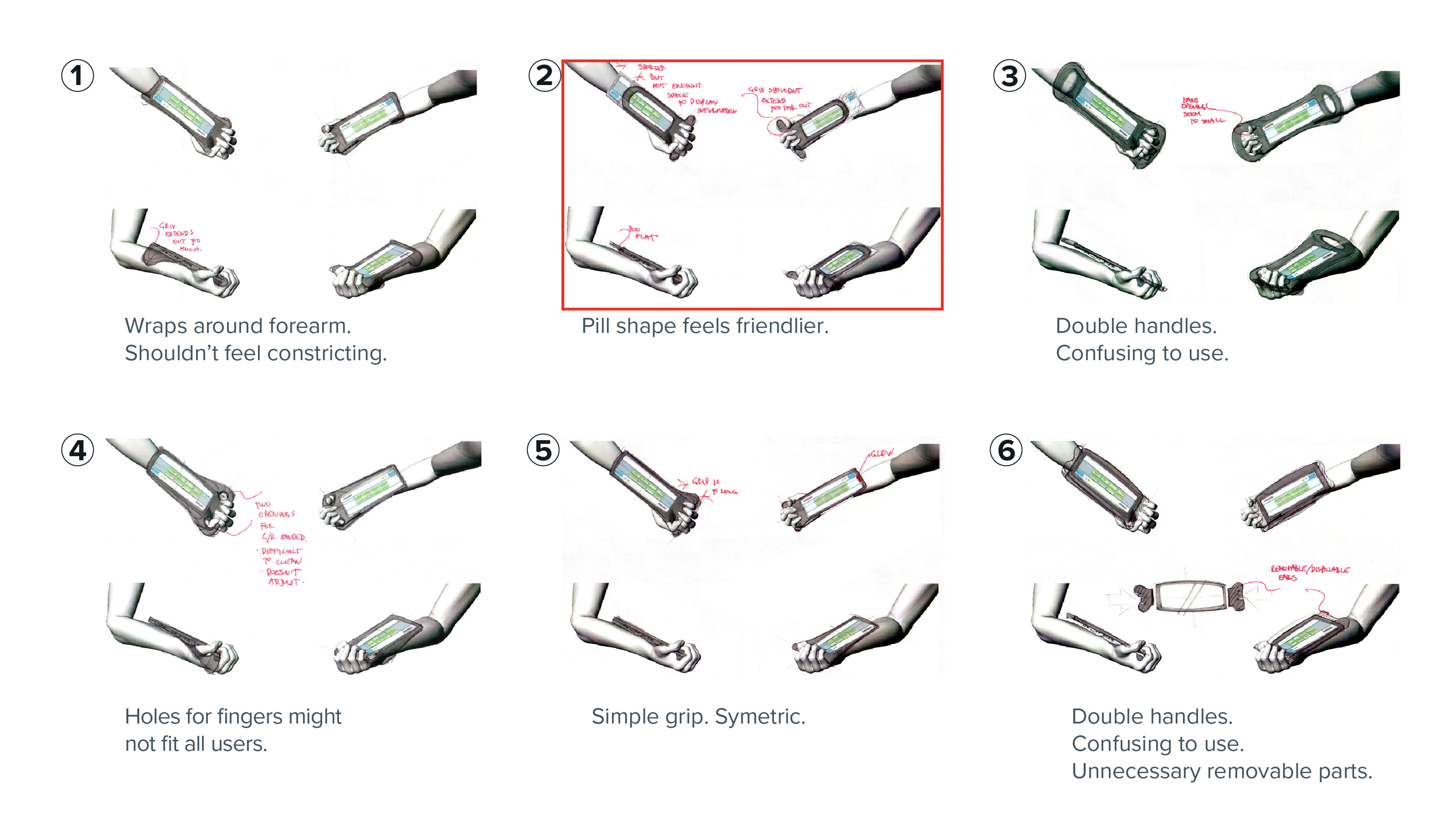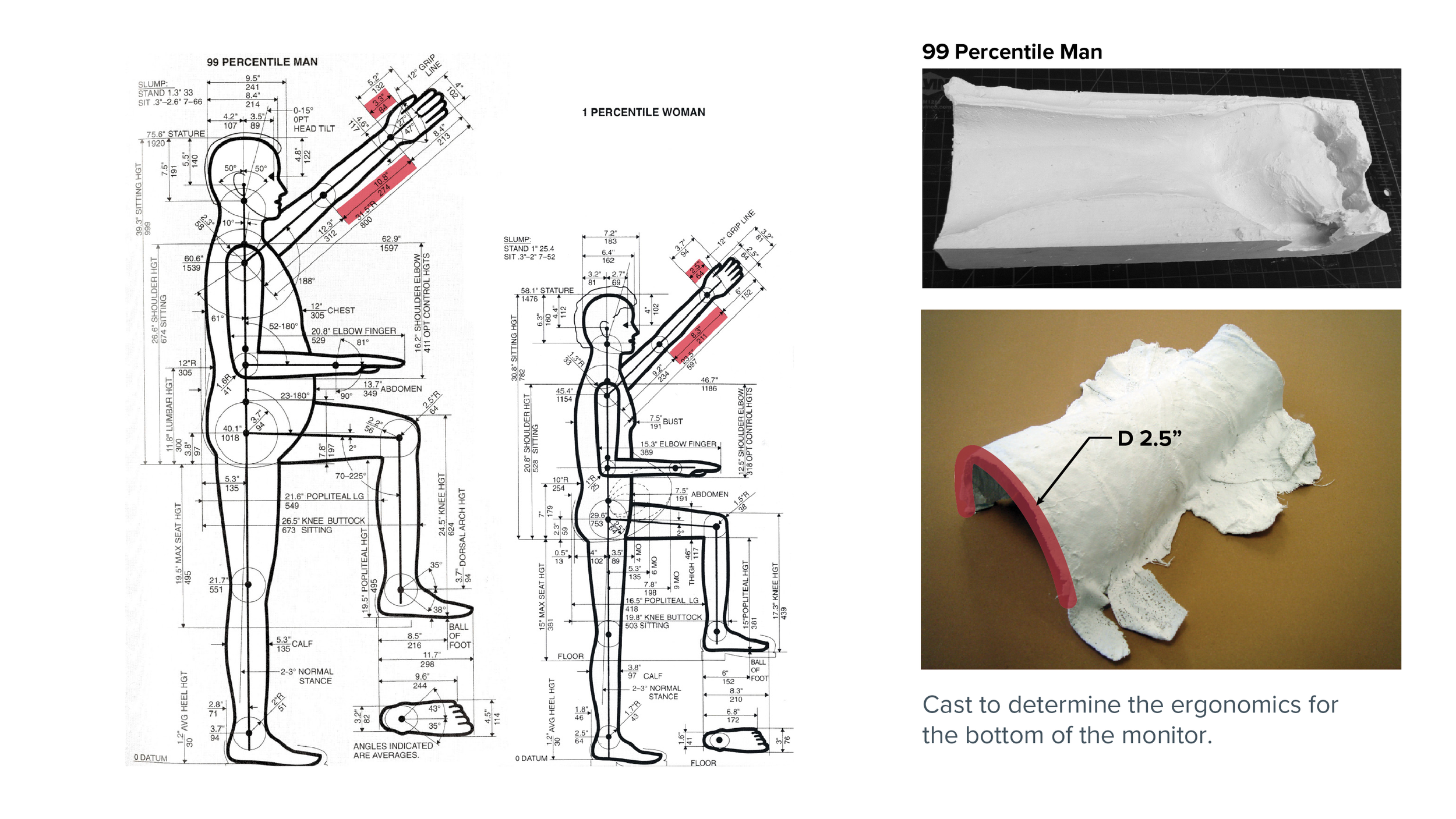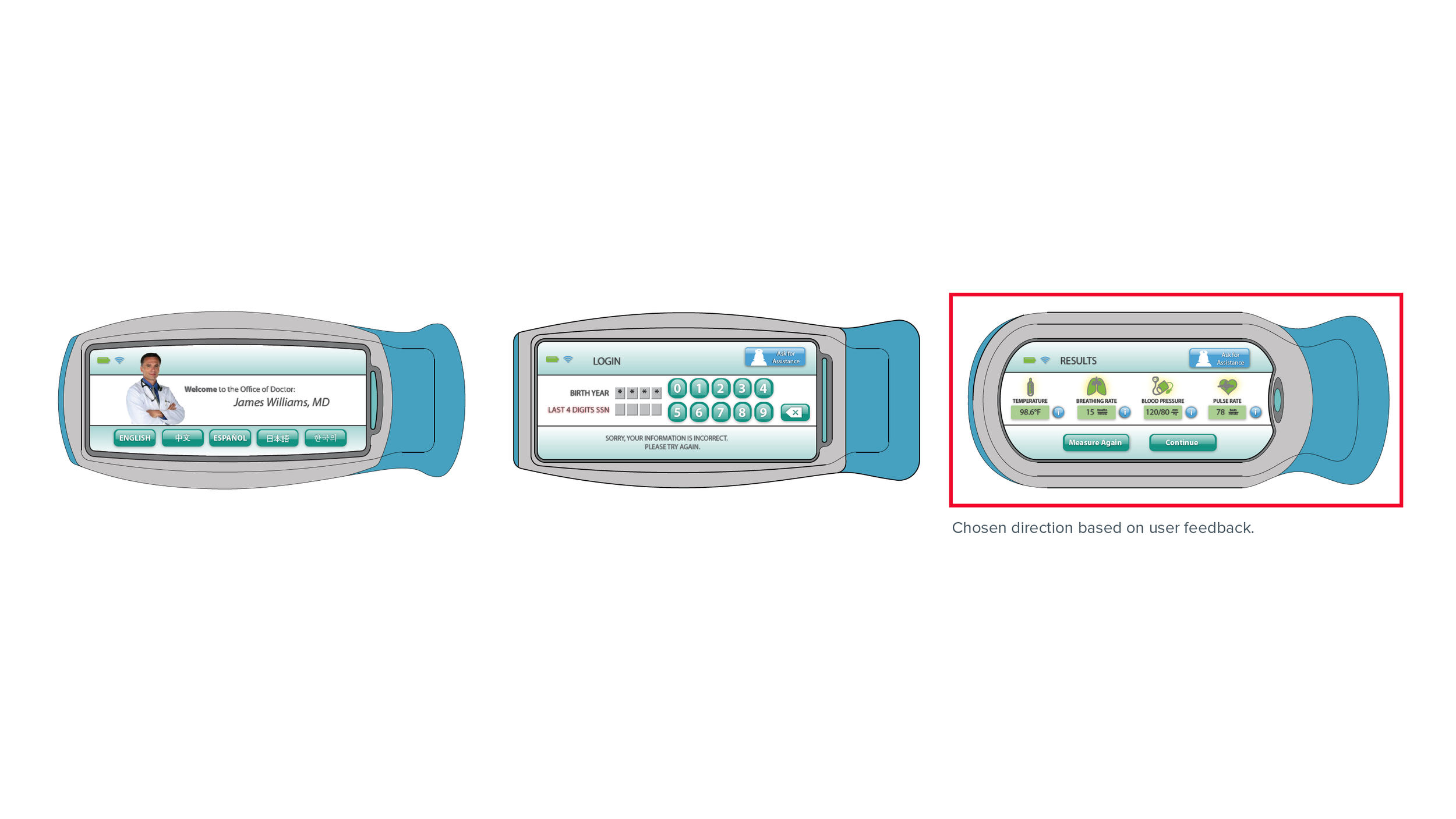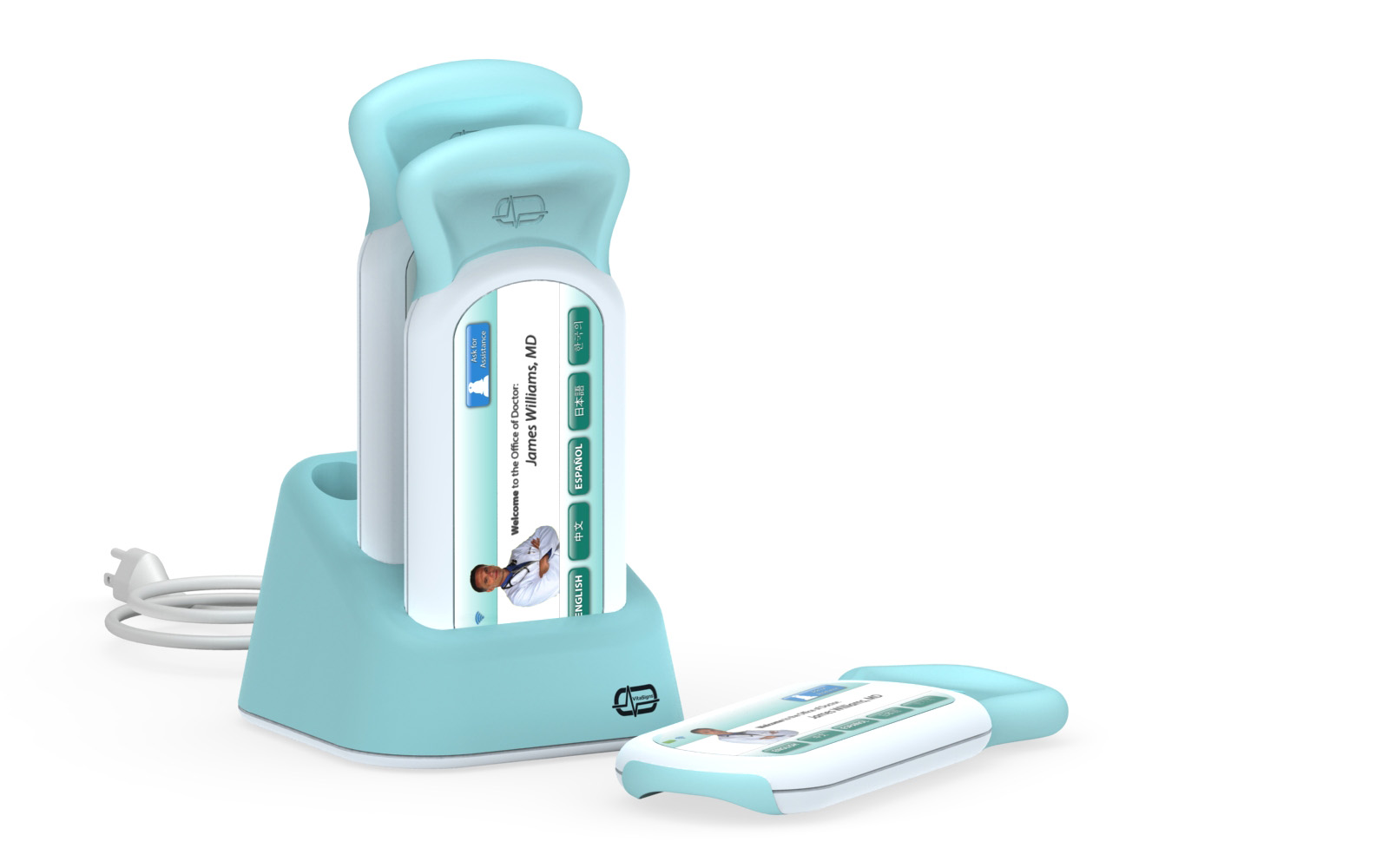vital signs monitor
DESIGN CHALLENGE
In the waiting room patients can experience different feelings such as tension, anxiety and frustration. Waiting and other medical and administrative processes involved can add up to an emotionally stressful experience.
If a design could help improve the experience for primary care patients, then it could give them peace of mind and at the same time make the doctor's office more productive.
Results
Self-service vital signs monitor for the primary care waiting room that measure blood pressure, heart rate, respiratory rate and temperature.
Some features include:
Non-invasive
Easy to clean
Accurate
Involves patients with their treatment
Secure wireless transfer of information
Improves levels of satisfaction for patients and medical staff
My Roles
Research
Sketching
Modelmaking
3D Modeling
UX/UI
Prototyping
Branding
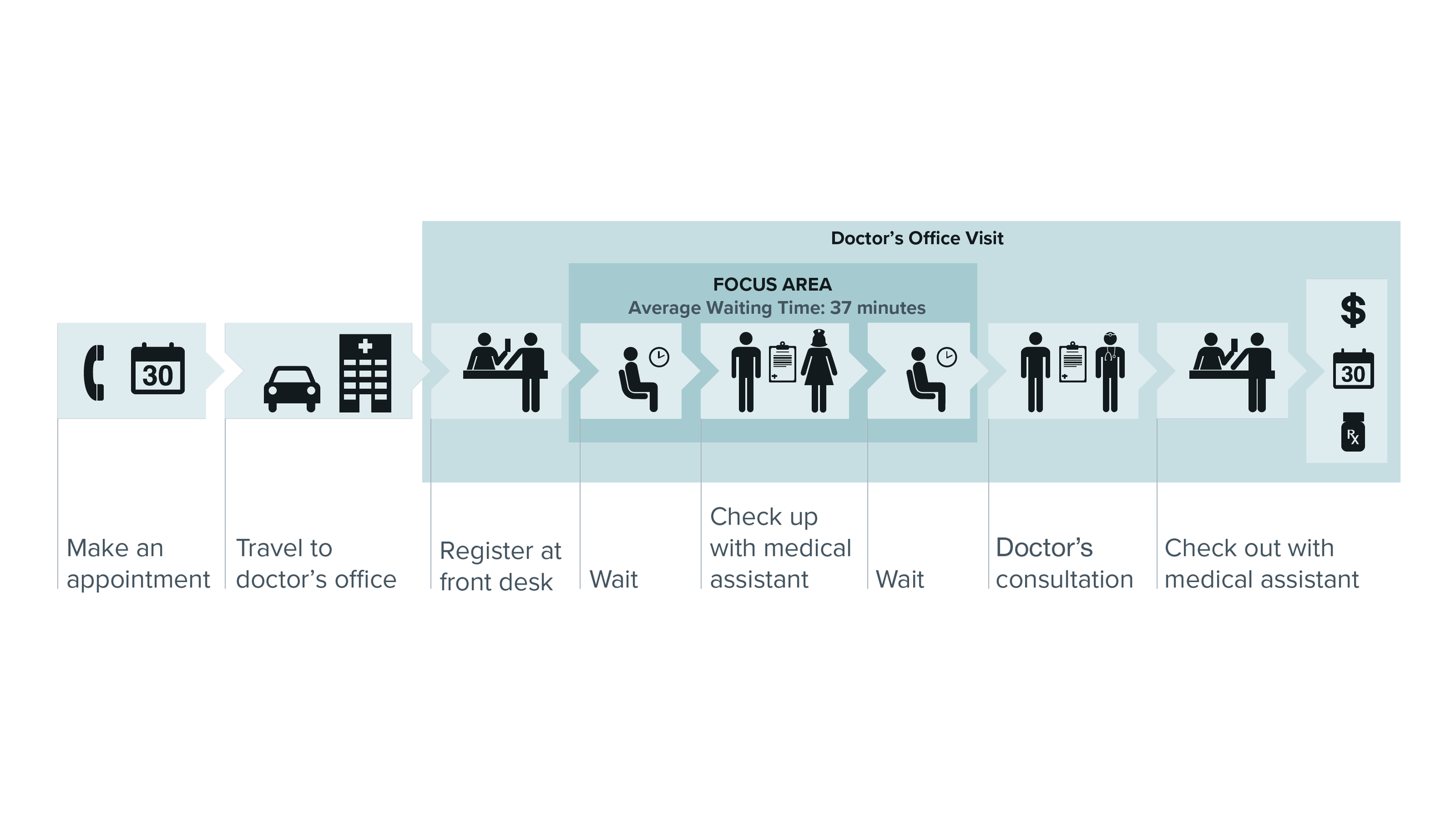
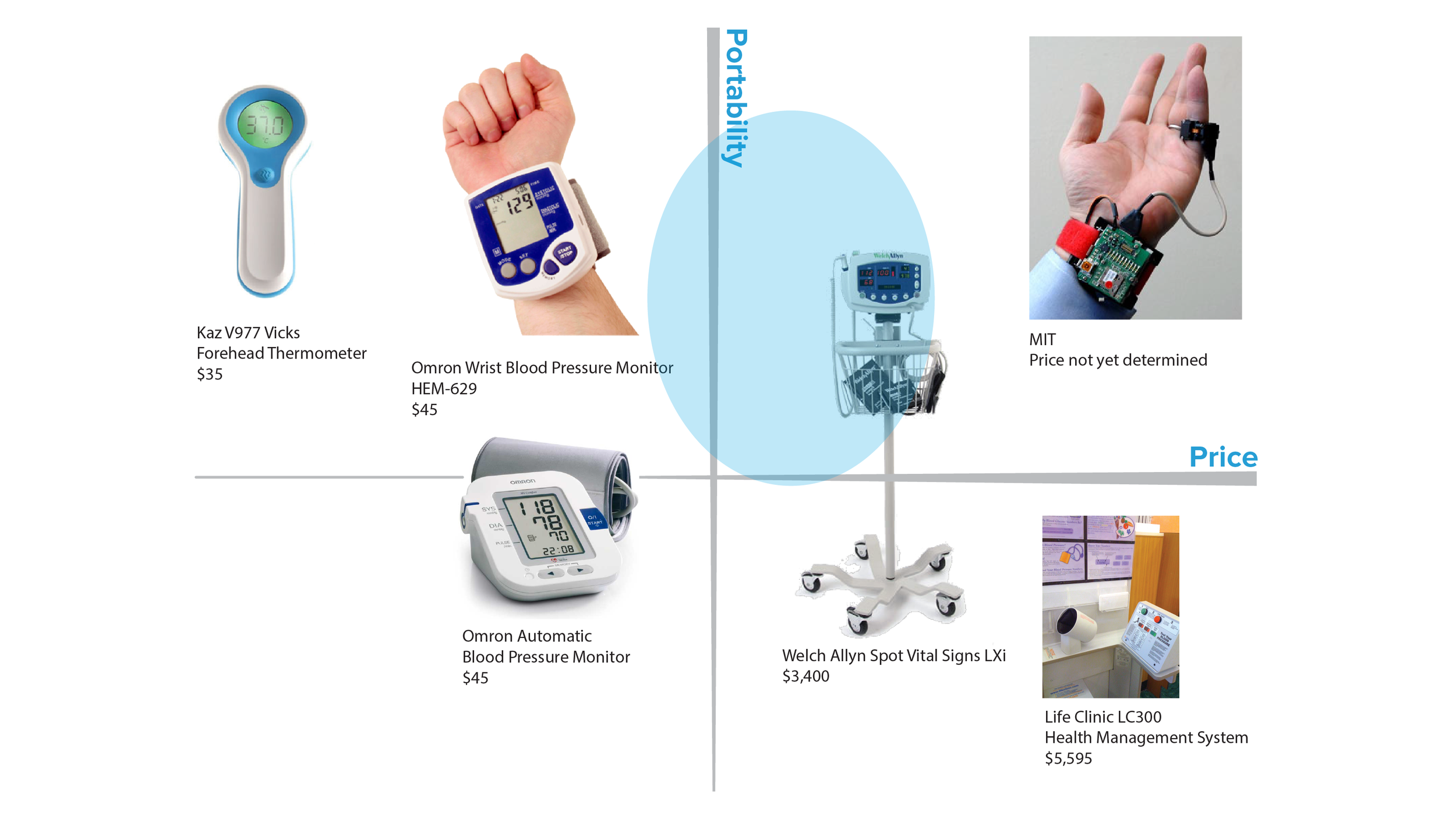

RESEARCH
A starting point for research was to understand the steps involved in a doctor's visit for all the stakeholders, a competitive analysis of similar products in the market and persona creation.
CONCEPT Ideation, VALIDATION and Refinement
The design process started with sketching different forms and exploring how usability affects the proportions of the device and its components. Physical mockups based on human factors and sample use case scenarios were then created and tested to get feedback from users. Through multiple iterations the final direction was refined.
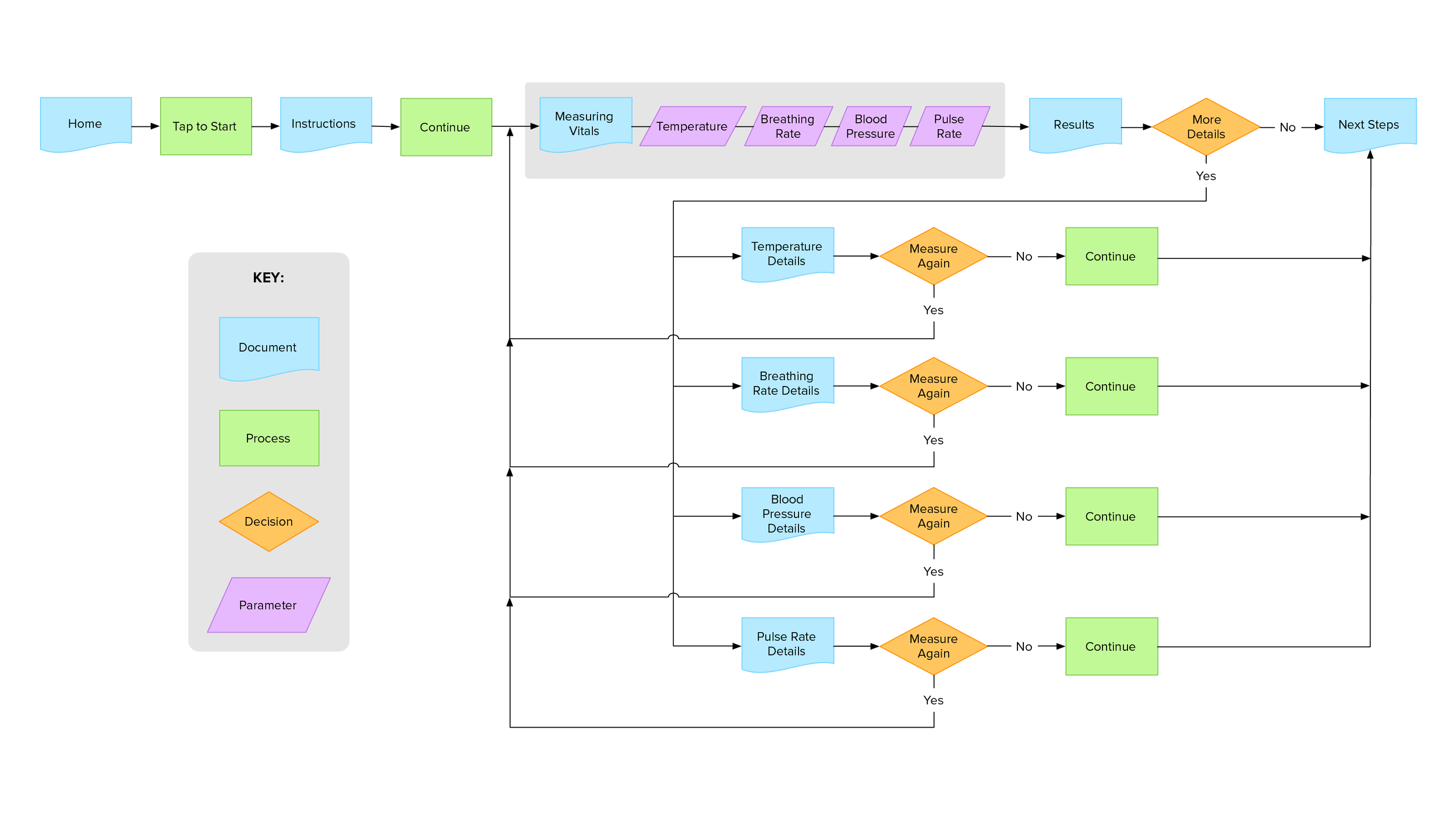
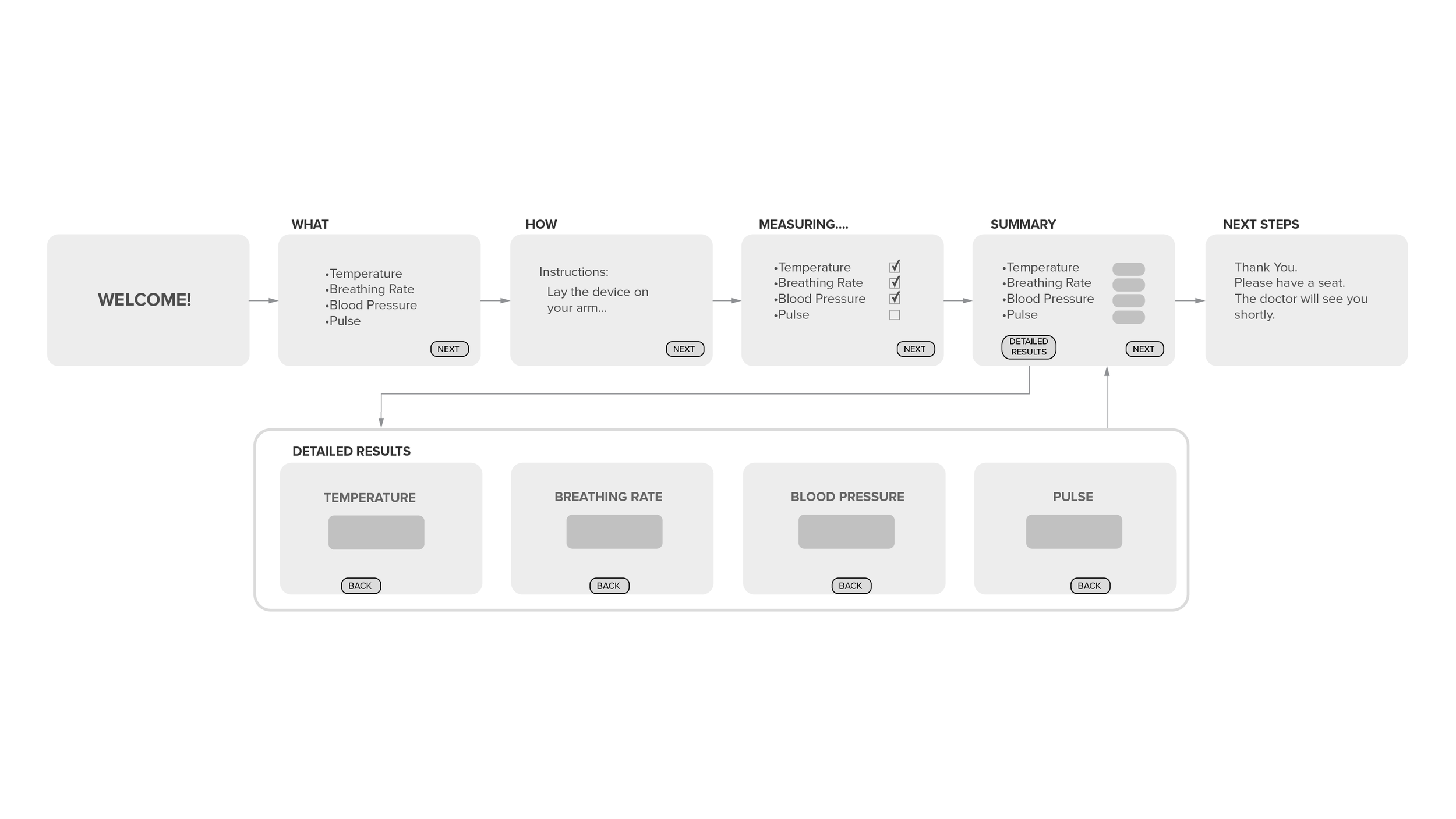
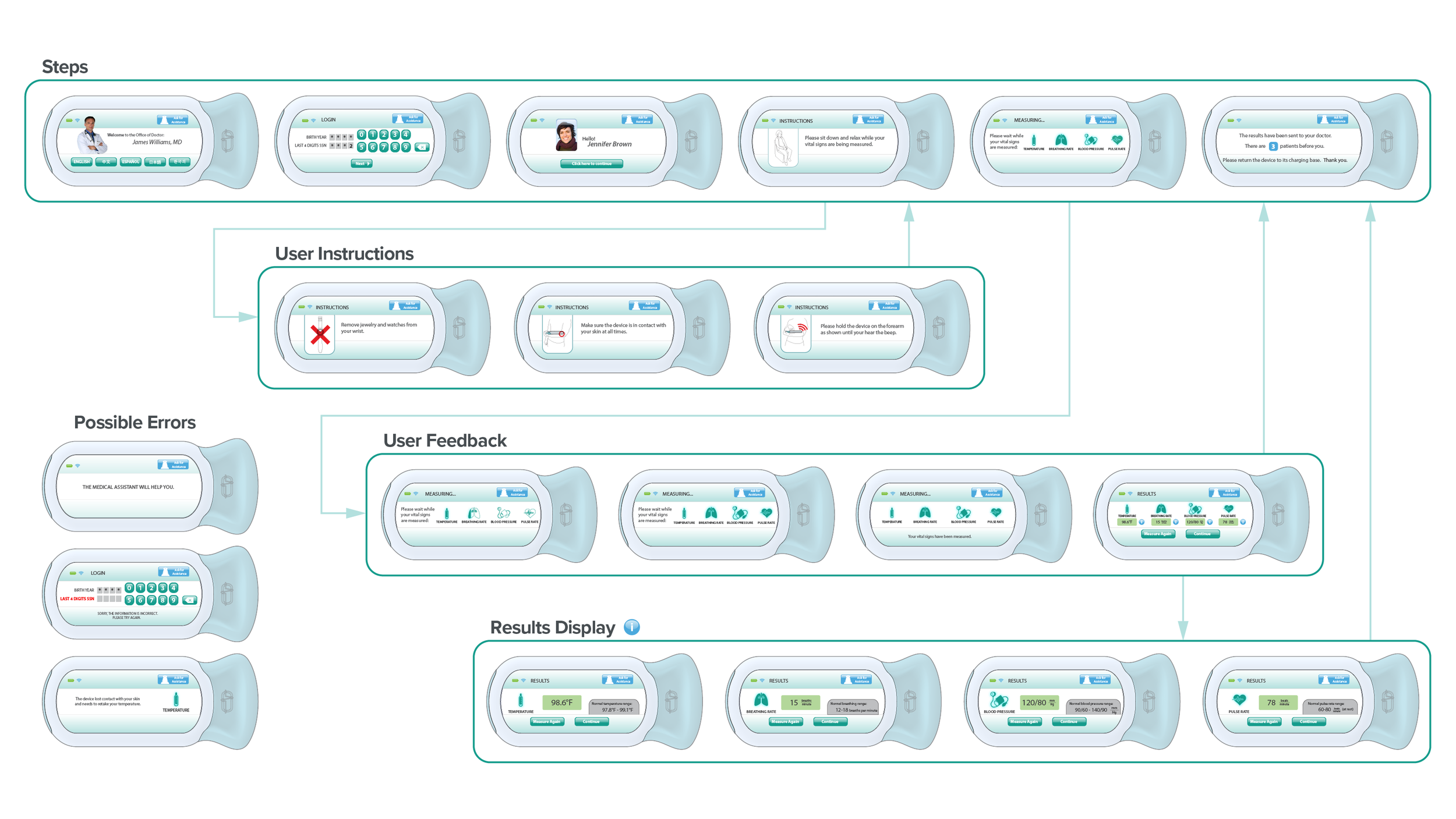
User Interface Design
At the same time that forms, materials and components were refined I started working on the user interface by creating use workflows, wireframes and refining screen flows that included error states and different levels of information based on users preferences.

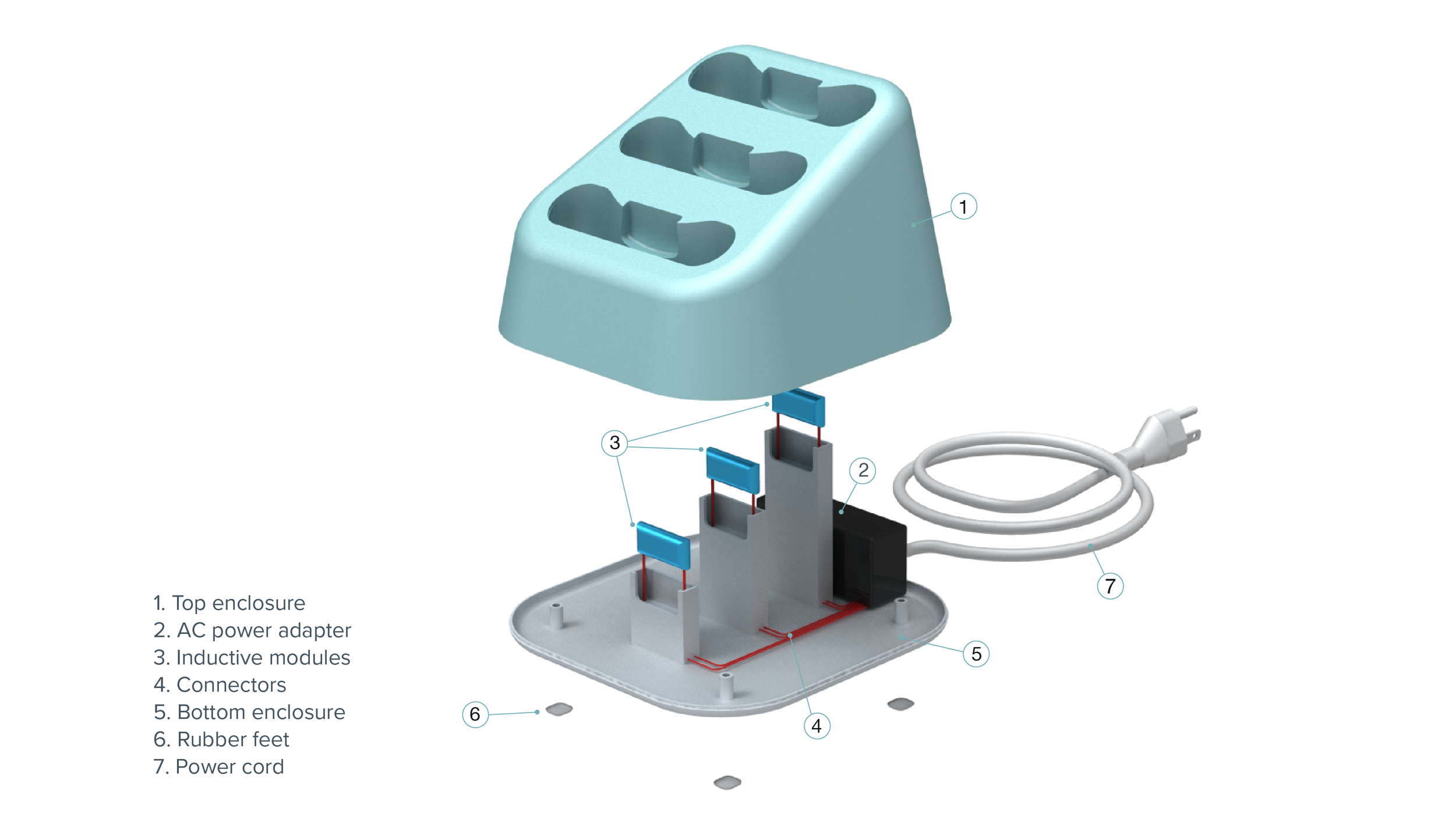
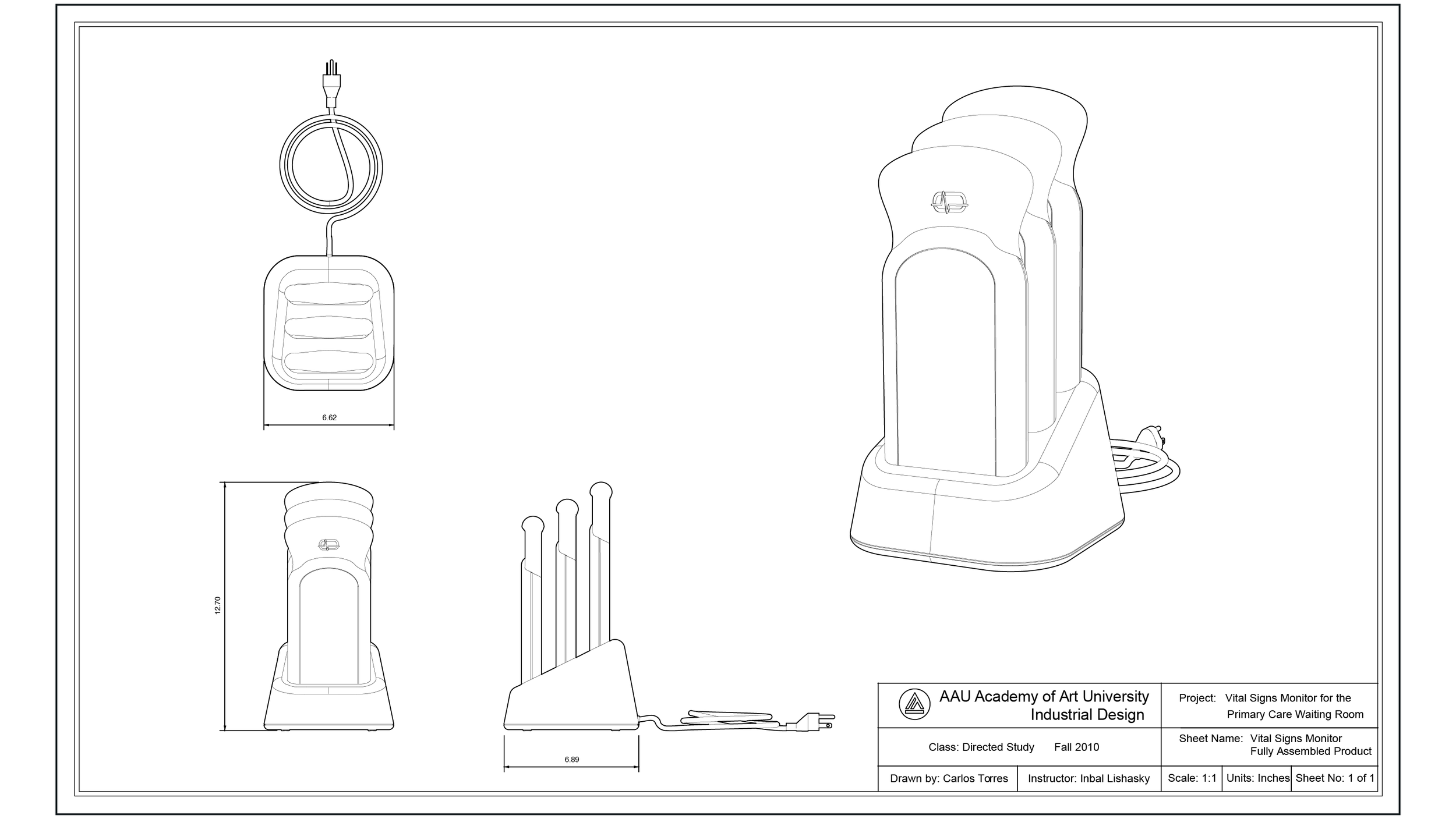
Technical Specifications
Once a final direction was validated I proceeded to create exploded views and a CAD package with technical specifications for manufacturing.
Final model and product in use
As a final step I created a final model to show the product in use in a real-life environment.
